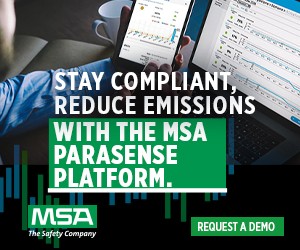Using Electronic Records Systems
The member’s company is going to a computerized maintenance scheduling and records keeping system. They would like to do away with paper records, but were wary that a lack of paper would not be acceptable by OSHA and, or, the EPA.
The IIAR reached out to some contacts at both EPA and OSHA to get a response on the topic, and their response is paraphrased below. The agencies raised some important considerations in moving away from paper that should be kept in mind in any such transition.
Many companies already use electronic records systems. The agencies see them all the time. The term “electronic” includes things like inspection or testing records that were originally done in hard copy, but were scanned and stored as a PDF file, as well as electronic logs, databases, equipment monitoring records, etc. Nothing in the regulations prohibits electronic recordkeeping, but those electronic records still need to meet the requirements of the rule. So if something is supposed to be certified (e.g., compliance audits, operating procedures), you still have to have a way to show that it was certified. The agencies interpret certification to mean signed and attested as accurate by someone in a position of responsibility, so that usually means there had to be a paper document at some point for someone to sign. It could then be scanned into an electronic file system later. And there are times when purely electronic records don’t work as well – where field personnel need to have copies of operating or maintenance procedures on hand for example. Also, when eliminating paper records, companies need to be careful not to do away with records that substantiate compliance with the regulatory requirements. Some things are obvious, for example PHAs that must be retained for the life of the process. Some things are less obvious – for example if they have hardcopy NDE results for a process vessel. The agencies and IIAR advise against throwing those away without making sure that they are scanned into an electronic file system and backed up. There are things like piping and instrumentation documents that can be difficult to transition to an electronic format without specialized software and lots of effort. P&IDs and other process safety information need to be updated pretty often if changes occur, so simply scanning an old paper P&ID into PDF form doesn’t do much for you.
In any case, electronic records must be made readily available and accessible for operators, records keepers and inspectors. Further, electronic records must have a “rock solid” backup system.
A different issue regarding standing water was raised by another member. This member asked if it was common to hear about citations issued for standing water in machinery rooms or production floors. To our knowledge, this has not been a problematic citation in our industry, at least in terms of PSM requirements. But generally, OSHA is concerned about walking and working surfaces. OSHA rule 1910.22(a)(2) states:
“The floor of every workroom shall be maintained in a clean and, so far as possible, a dry condition. Where wet processes are used, drainage shall be maintained, and false floors, platforms, mats, or other dry standing places should be provided where practicable.”
This is a broad ruling that is ripe for inconsistent interpretation by using terms like “as far as possible” and “where practicable.” It is common that condensation water from ammonia pumps, un-insulated valves and perhaps other refrigeration equipment is practically inevitable. The best approach is to be sure that housekeeping pads and equipment foundations are designed or modified to allow water to reach floor drains as best as possible, and to address places where water tends to stand by installing drains or raising the surface and redirecting the water. Another possibility is to vacuum puddles if they occur infrequently. Although this seems like a minor point, water on the floor is common, and any citation issued could trigger a repeat violation citation to companies with multiple facilities.













